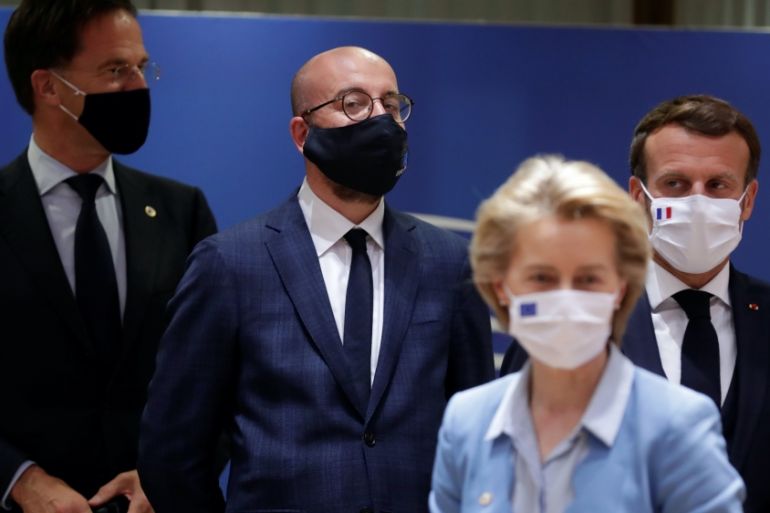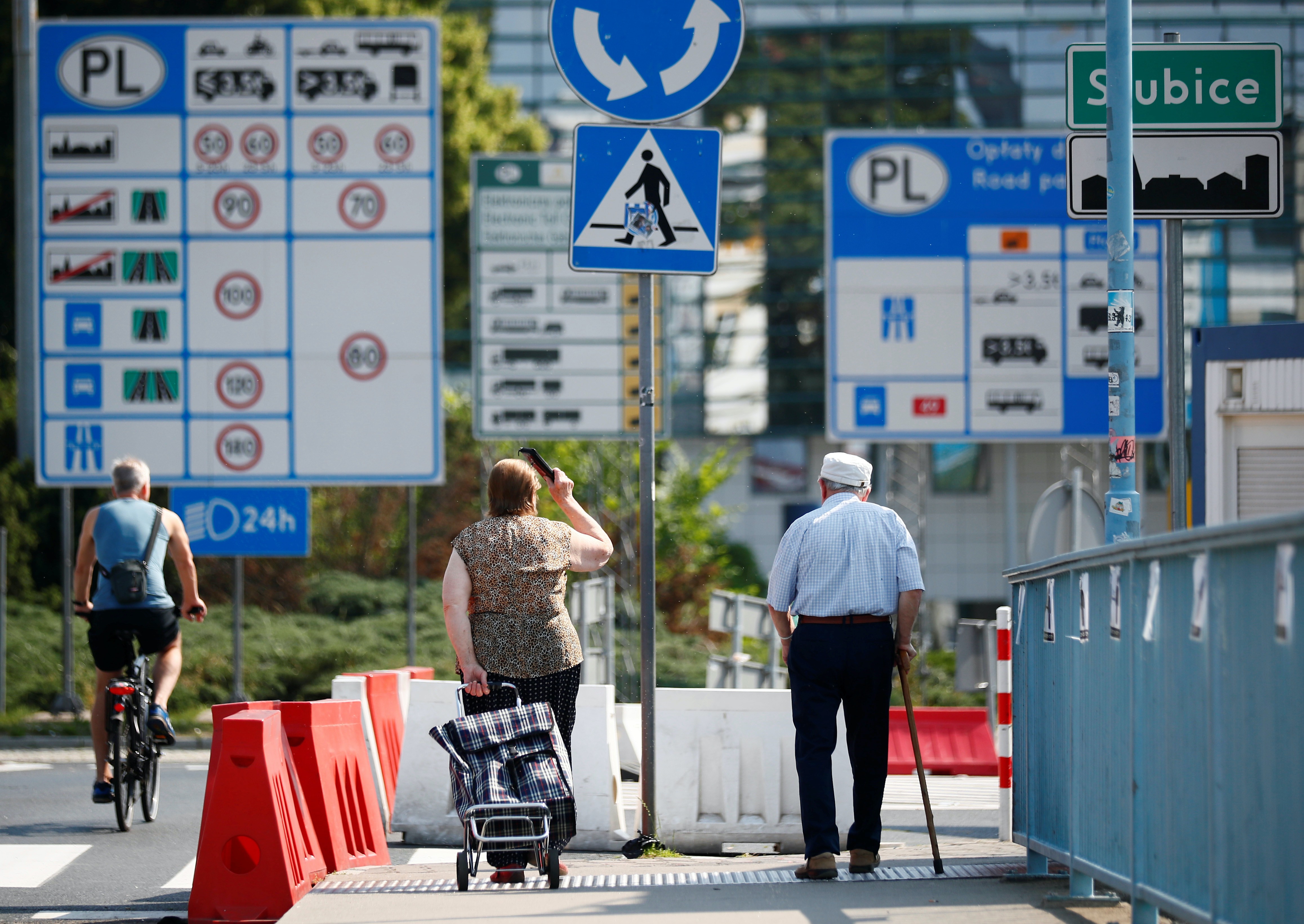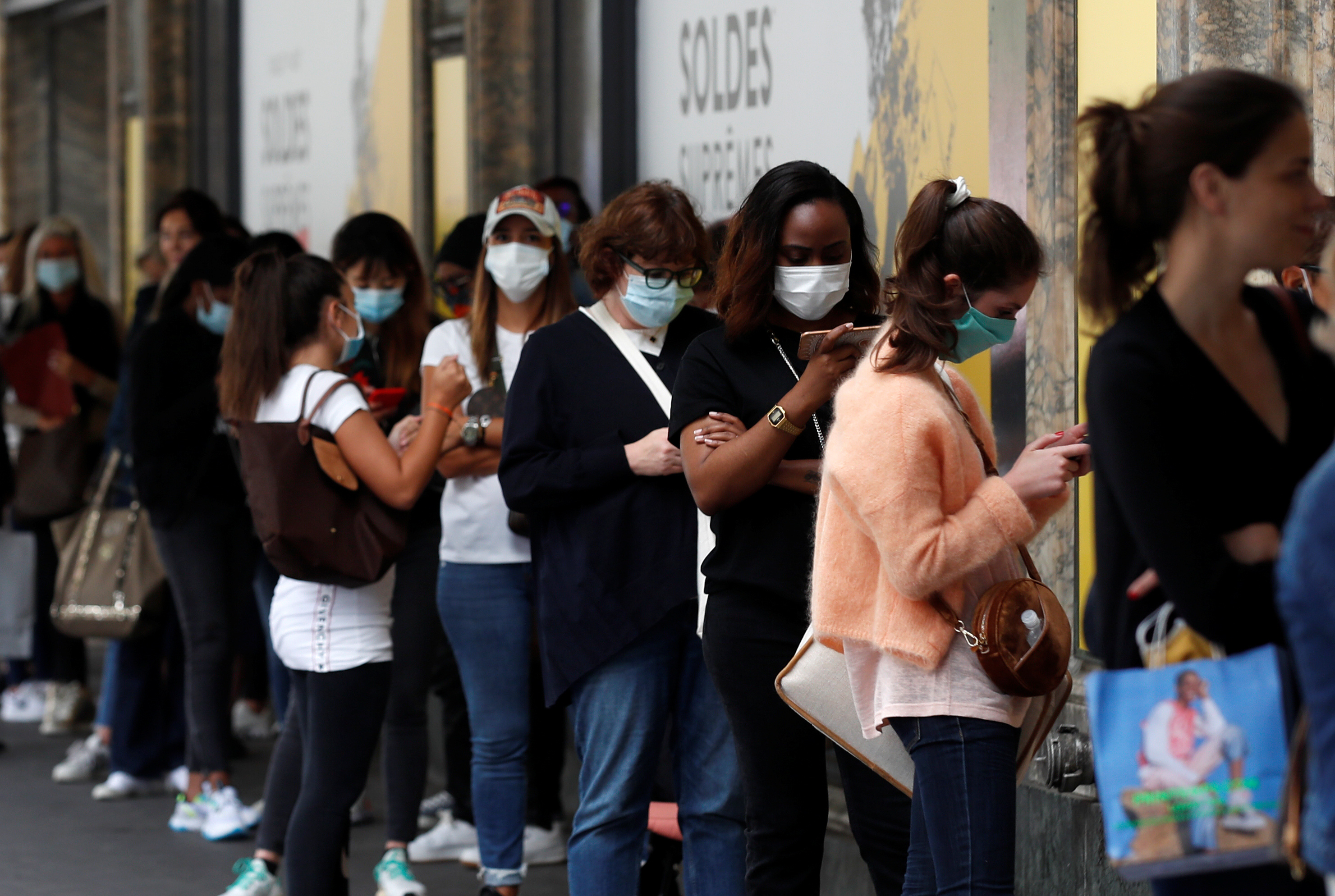How climate friendly is the EU economic recovery package?
Deal reached by EU leaders earmarks 30 percent of package for climate protection, but cuts key climate programmes.

European Union leaders clinched a deal on Tuesday for a huge stimulus package that the European Commission said will make fighting climate change central to Europe’s economic recovery from the coronavirus pandemic.
Climate advocates say the agreed 750 billion euro ($865bn) recovery fund negotiated alongside a 1.074 trillion euro ($1.24 trillion) EU budget for 2021-27, was a mixed bag, with large sums earmarked for green investments, but cuts to key climate programmes and insufficient rules to ensure cash does not support polluting investments.
Keep reading
list of 4 itemsGeorgia’s ‘foreign agents’ bill: What’s the controversy about? What’s next?
What’s at stake in next month’s European elections?
EU to drop rule-of-law dispute with Poland
Here are the climate elements of the deal.
30 percent climate spending share
The deal earmarks 30 percent of the entire package for climate protection and says all spending must contribute to EU emissions-cutting goals.
There are too many things that still need improvements.
This could see nearly 550 billion euros ($635bn) spent on climate initiatives over 2021-27 – an enormous sum, but far below the 2.4 trillion euros ($2.7 trillion) in investment researchers say is needed to meet EU climate goals.
Just transition fund
The EU’s flagship fund for weaning countries off of fossil fuels received 17.5 billion euros ($20bn) – less than half of what was previously proposed. The conditions for accessing it were also watered down.
Countries that have not signed up to an EU-wide target to become “climate neutral” by 2050 will only get half of their share of the Just Transition Fund.
Previous proposals would have forced countries to commit to climate neutrality at a national level – but EU officials said this was a “red line” for Poland, the coal-heavy country expected to receive the biggest chunk of the money.

Money was also shaved off InvestEU and Horizon Europe, two programmes earmarked for sustainable investments, as EU leaders conceded cuts to appease frugal northern countries.
Green taxes
New green taxes will help fill EU coffers, with an EU-wide tax on non-recycled plastic waste scheduled for next year.
A plan to slap levies on polluting imports should be ready by 2023, and a scheme to use carbon market revenues to shore up EU funds will be considered later.

Spending safeguards
The EU deal does not say what rules it will apply to ensure funding goes to climate-friendly schemes and some members of the European Parliament – which must approve the package – refused to commit their support without tougher conditions to block polluting investments.
“There are too many things that still need improvements,” said Dutch Green legislator Bas Eickhout. “The deal is not over yet.”